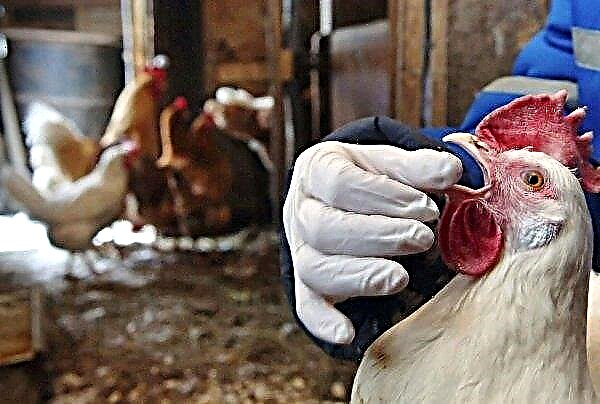Sauerkraut is a popular food product in many countries of the world, which differs in the way of preparation and, accordingly, shelf life. The relevant question is how much sauerkraut can be stored at home, in what and where it is better to place it, so we will consider this information in more detail.
Place, conditions and storage temperature of sauerkraut
Usually sauerkraut is cooked in large volumes, especially if it is harvested for the winter. Long-term storage of this product is possible only if the appropriate temperature conditions are observed, which allows to increase the shelf life. The optimum temperature is considered to be a range from +4 to 0 ° С. The process of fermentation of the product does not stop until the air temperature in the room exceeds + 10 ° C, therefore, in the apartment at room temperature, long-term storage of the product is impossible.
Important! When storing the workpiece in a warm room without a refrigerator, it quickly peroxides and becomes unusable.
You can store the finished product in the refrigerator, but the shelf life in this case will not be as long as in the cellar, since the temperature is usually set at + 6 ... + 5 ° С. If it is possible to adjust the temperature, then it is better to set it at + 4 ° C.
Many are interested in the question of whether it is possible to store the workpiece in the winter on the balcony. This is especially true if residents of apartments do not have a summer residence with cellars, and it is problematic to store large containers in the refrigerator. Indeed, a similar storage method can be applied on glazed balconies when the air temperature does not fall below 0 ° C and does not rise above + 8 ° C. If, in severe frosts, the balcony freezes, then the container must be installed on an elevation and provide a multi-layer shelter from warm things.
In addition to the air temperature in the room in which the finished product will be stored take into account the level of air humidity and light intensity. The container must be protected from direct sunlight, as the finished product can quickly deteriorate. Humidity for normal storage of workpieces should be increased, the optimal indicators are 85–95%.
Did you know? Sauerkraut is much healthier than fresh, in the process of fermentation it preserves all the useful substances, and is also enriched with organic acids - acetic and lactic.
How long can I store sauerkraut at home
Depending on the place and storage conditions of the workpiece, the shelf life of the product without changing the taste and appearance will differ, therefore, consider how much sauerkraut can be stored:
- in fridge the shelf life of the blanks, provided that the containers are airtight and air temperature is 3 months, in an open bank - no more than 10 days;
- in the cellar the shelf life of the finished product is at least 3 months;
- in an apartment, at an air temperature above + 10 ° С, the expiration date will be 2-3 days;
- in room, at a temperature of +10 to + 6 ° С, the shelf life does not exceed 15-30 days;
- on a glazed balcony in winter, at a temperature of +5 to 0 ° C, the shelf life is 4-5 months;
- longer storage means finished product freezing and storage in the freezer for up to 8 months. In this case, repeated freezing is not allowed, thawed product is consumed within 5 days.

Features storage sauerkraut
So that the shelf life of the pickled product is long, and the taste during storage is not affected, it is recommended to observe some rules when using different containers or the location of the workpiece.
In banks
In banks it is very convenient to store sauerkraut, in addition, such containers do not take up much space in the refrigerator. The main condition for obtaining a high-quality final product is thorough washing of the can with hot water, followed by sterilization. Sterilization allows you to destroy the pathogenic microflora, which often causes acidification or moldiness of the workpieces. If the product will be placed in a jar, it must be brushed to the top and watered with vegetable oil. Cans are sealed with plastic or metal lids and sent to a cool place, in this form, the workpiece can be stored for more than 1 month.

In barrels
The best in taste is sauerkraut in an oak barrel. In such a container, it is left for storage. Wooden or plastic barrels are convenient in that you do not need to buy a large number of containers if you plan to harvest a lot of sauerkraut for the winter. Such blanks are stored only in a cool place - usually in a cellar or in large cold rooms, it is desirable that the air temperature does not exceed + 2 ° C.
Important! In order for the barrel to serve more than one year, a wooden pallet must be installed under the bottom. If the bottom of the barrel is constantly in contact with a damp floor (which is usually the case in a cellar), it will begin to rot.
In the process of storing cabbage in a barrel, when it is regularly opened, a mold film will form on the walls and the top layer of the brine from contact with oxygen, which must be removed in a timely manner and wiped with a natural cloth moistened with strong saline. Special attention should be paid to the pressure circle, which is constantly in contact with cabbage, it should also be wiped, and it is better to periodically keep it in a salt solution for 10 minutes.
In fridge
The refrigerator is a great place to store blanks, primarily because it is in every home, so you can use pickled foods all year round.
It is most convenient to store sauerkraut in a refrigerator in rectangular plastic containers or sealed bags that can be folded compactly, which cannot be said about glass jars. It is better to put the cabbage in several containers or packages, so that after using the contents of one, go to another. Sealed containers can keep cabbage fresh for 30–45 days.

In the cellar
The air temperature in the cellars during the winter is suitable for storing sauerkraut, and the air humidity is ideal. It is possible to store the workpiece under such conditions for a very long time, especially in cans corked with metal lids. In the summer, storing sauerkraut in the cellars for a long time is impossible, since even well-buried cellars have a temperature above + 7 ° С. In this case, the shelf life of the blanks will be reduced to 1 month.
Suitable containers are selected for storage in order to maximize the shelf life of the workpieces. Sauerkraut can be poured into enameled pots and buckets with tight-fitting lids. It is important to inspect the dishes for chips, if they are, then such a container can not be used for acidic products, since the product will be oxidized from contact with the metal.Did you know? Sauerkraut is not only eaten, but cosmetics are also prepared on its basis. Masks with this product remove age spots, relieve acne.

Useful Tips
Consider some useful tips for storing sauerkraut, which allows you to maintain the quality of the workpiece at a high level and maximize the shelf life:
- Since the main value of sauerkraut is the content of a large amount of vitamin C, as well as coarse fibers that ensure normal digestion and metabolic processes in the body, care must be taken to ensure that beneficial substances are not destroyed during storage. To do this, the blanks must be covered with brine, and the product is removed from the liquid only before serving. If the liquid does not cover the whole cabbage, it is recommended to use a press that will press down the main product, in which case the brine will cover it completely.
- Regular sugar will help to prevent peroxidation of the product; it is added as a preservative, which stops the fermentation processes occurring in an acidic environment. Sugar is poured directly onto the top layer of cabbage. For the same purpose, you can use table vinegar, but it should be added directly to the brine, thoroughly mixing the contents of the container. Acetic additive can slightly change the taste of the workpiece, so it should be added carefully and in minimal doses.

- A good preservative is vegetable oil, which is poured onto the surface of the brine. It allows you to block the access of oxygen to the main product and protects against the effects of pathogenic microorganisms that provoke rapid decay and food spoilage.
- If the workpiece is slightly peroxide, it can be used to prepare dishes undergoing heat treatment, in which case cabbage should be thoroughly washed and sprinkled with 1 tsp. Sahara.
- To protect the workpieces from molds, mustard powder or mustard seeds bound in a gauze bag should be added to the container. Such products have an antiseptic effect and prevent the development of harmful microorganisms.
- You can extend the shelf life of cabbage by adding cranberries to the container, which are a natural preservative and prevent quick spoilage.
- Horseradish is a good product for protecting workpieces from quick spoilage, which prevents the development of bacteria and fungi, and also gives a piquant taste and aroma to pickles. It is already added to the finished product, after ripening, so as not to interrupt the fermentation processes.
Thus, the duration of storage of sauerkraut directly depends on the capacity, place and conditions that were organized. In order for the product to be usable as long as possible, it is recommended to pay attention to the information in the article.














